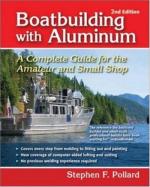|
This section contains 663 words (approx. 3 pages at 300 words per page) |

|
Although aluminum makes up about 8 percent of the Earth's crust (it is the third most plentiful crustal element), it does not occur in its pure form, but is found associated with other elements in compounds, such as aluminum chloride (cryolite) and aluminum hydroxide (bauxite). It was identified as a possible new metal prior to 1800, but it was not until 1825 that it was isolated in powder form by Danish chemist Hans Christian Oersted (1777-1857). Two years later German chemist Friedrich Wöhler produced it in solid ingot form (1880-82). These discoveries, as essential as they were, did not make it possible to produce aluminum in large quantities. Thus it was considered a precious metal for most of the nineteenth century.
Mass production of aluminum was made possible with the simultaneous invention of the electrolytic reduction method by American chemist Charles Martin Hall and French chemist Paul-Louis-Toussaint...
|
This section contains 663 words (approx. 3 pages at 300 words per page) |

|


